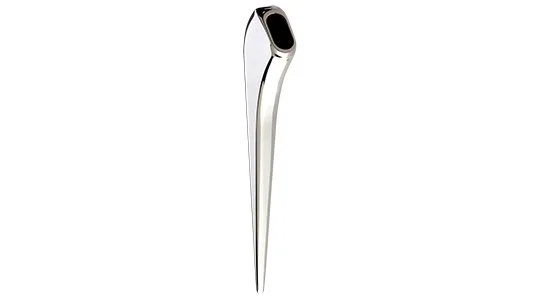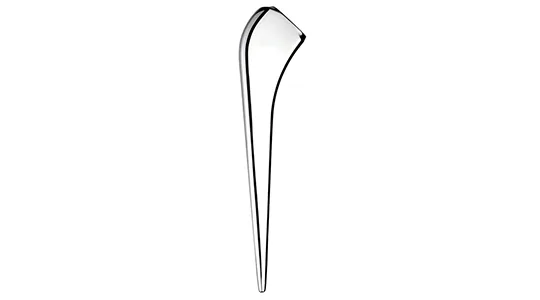Design Features
- Taper-slip
- Stem acts as an extruder of cement into and onto the endosteal bone surface.1
- Stem distally moves within the cement mantle, without disruption of the cement-bone interface.2,4
- Accommodates cement creep and stress relaxation in the cement mantle.6
- Dual taper geometry
- Promotes cement engagement and provides rotational stability.
- “Force Closed Fixation”: Transmission of load from the stem’s proximal part onto the femur.5
- Highly polished, forged CoCr surface
- Complements the taper engagement by reducing abrasion at the stem/cement interface.³
- Rounded edges
- Promotes radial compressive loading.
- 2 types of hollow-pocket centralizers – with/without wings
- Allow distal stem engagement within the cement mantle and to prevent end-bearing.
- Modular neck technology
- Avoids compromising in stem positioning within the cement mantle9

Product Options
- Sizes 0–4
- Highly polished CoCr surface
- Modular necks
